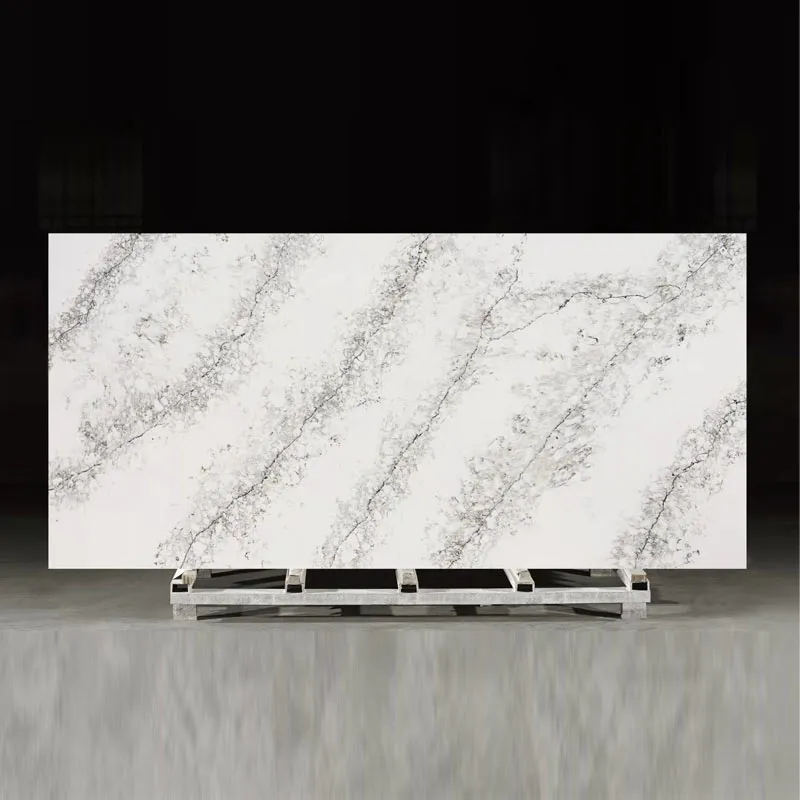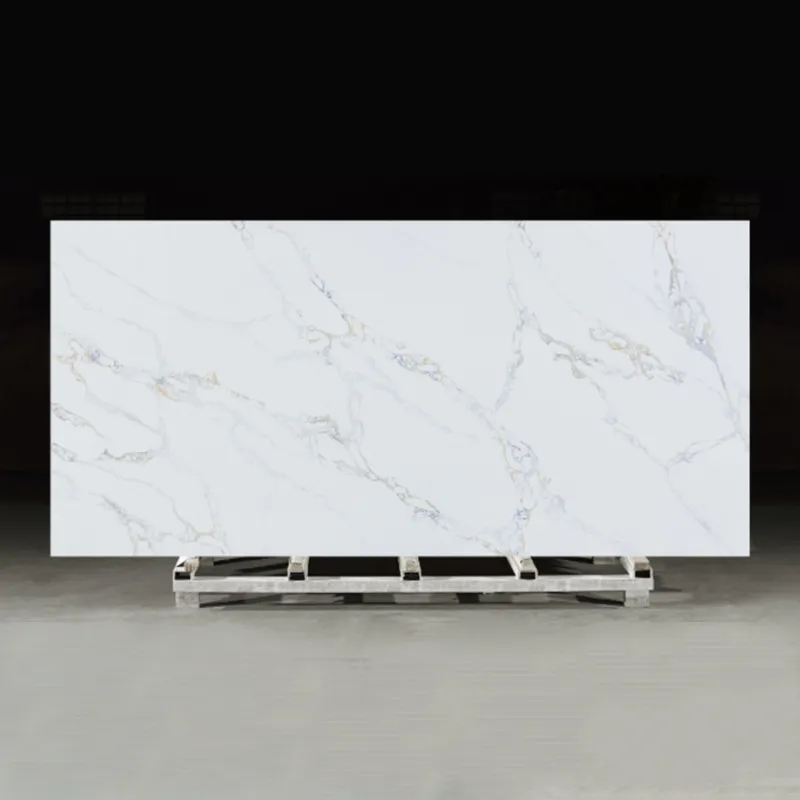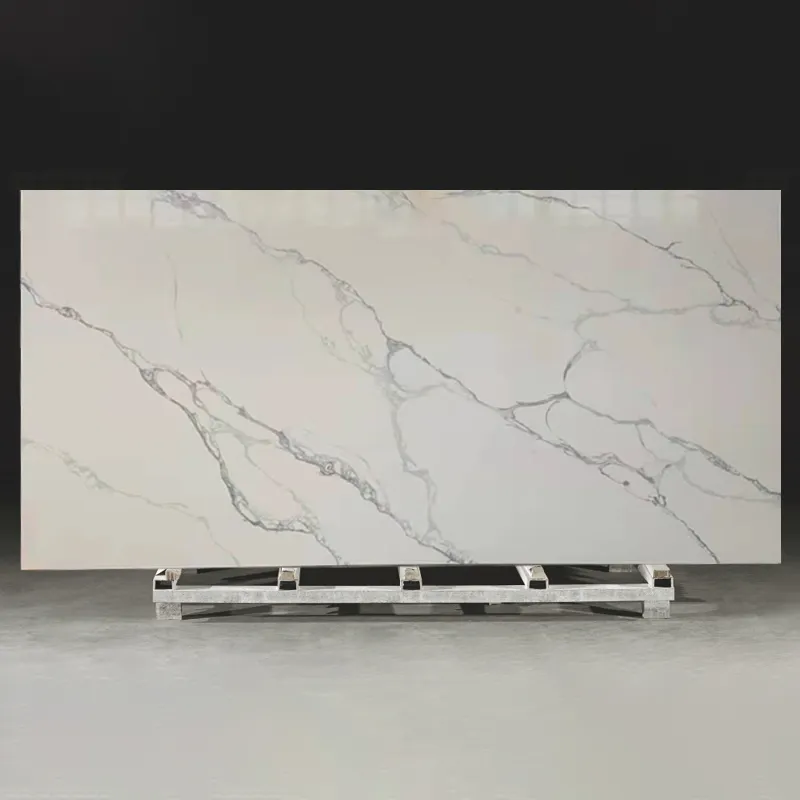Marble is undoubtedly one of the most luxurious natural stones for home decor. Not only is it beautiful, it also lends a space a timeless elegance. However, keeping both white and black marble pristine and protected from daily wear and stains is a common challenge for every marble lover.
Marble is a natural stone, and its porous nature means it absorbs stains and spills more easily, especially when it’s exposed to high-traffic areas like kitchens and bathrooms. That’s why daily cleaning, regular maintenance, and proper care are key to extending the life of your marble surfaces. This article will take an in-depth look at how to clean and care for your white and black marble countertops like a pro, keeping them looking sleek and flawless.

Table of Contents
1. Daily Cleaning Procedure for White and Black Marble
1.1. Regular Wiping is Key:
1.2. Use a pH Neutral Cleaner:
2. Stain Removal Techniques
2.1. Identify Common Stains:
2.1.1. Organic Stains:
2.1.2. Inorganic Stains:
2.1.3. Biological Stains:
3. The Necessity of Sealing White and Black Marble Surfaces
3.1. External Sealers:
3.2. Penetrating Sealers:
3.3. Dealing with Etches and Scratches:
4. Special Care for White Marble
4.1. Regular Sealing:
4.2. Clean Spills Immediately:
4.3. Regular Maintenance:
5. Professional Care for High-Traffic Areas of Black-Veined White Marble
5.1. Enhanced Cleaning Frequency:
5.2. Preventative Measures:
5.3. Choose a Durable Finish:
5.4. Regular Polishing Procedure:
1. Daily cleaning procedures for white and black marble
Whether you have white or black marble countertops in your home, daily cleaning is the most basic and effective maintenance method. With a simple cleaning routine, you can prevent stains from penetrating the surface of the stone and prevent problems such as etching and scratches.
1.1. Regular wiping is key
The first step to keeping marble countertops clean is to wipe the surface regularly. In daily life, spills and dust will accumulate on marble, and if not cleaned up in time, they may become stubborn stains. It is recommended to wipe the marble surface with a clean, soft rag every day to ensure that the countertop is dust-free and spill-free.
In addition, it is especially important for white marble to deal with spills in a timely manner, because dark liquids (such as red wine, coffee) or colored foods (such as ketchup) may quickly penetrate and leave permanent stains.
1.2. Use PH neutral cleaners
Marble is chemically sensitive, so it is crucial to use the right cleaner. Avoid using acidic or alkaline cleaners, which will damage the surface gloss of marble and even cause etching (especially white marble). You should choose pH neutral cleaners, which are gentle and will not damage the stone.
You can prepare a spray bottle, fill it with a mixture of warm water and pH neutral cleaner, gently spray it on the marble surface each time you clean it, and then wipe it clean with a soft dry cloth or microfiber cloth. This simple cleaning method can effectively remove surface dust and minor stains, keeping the marble smooth and clean.
2. Stain removal technology
Although marble countertops will remain relatively clean after daily cleaning, they will occasionally encounter stubborn stains that are difficult to avoid. In this case, it is particularly important to understand stain removal techniques and how to correctly identify the source of stains.
2.1. Identify common stains
Different types of stains require different removal methods, so first learn to identify the types of common stains.
2.1.1. Organic stains
Organic stains are usually caused by food, beverages or oil stains, such as coffee, red wine, lemon juice, ketchup, etc. These stains can cause discoloration on the marble surface, especially on white marble.
Organic stains can be removed by wiping with a damp cloth and a mild detergent, or by gently wiping the stained area with a hydrogen peroxide solution, but be careful to control the frequency of use of hydrogen peroxide to avoid damaging the marble surface.
2.1.2. Inorganic stains
Inorganic stains mainly come from the oxidation of metal objects (such as pots and utensils). These stains will leave dark marks on the marble surface, especially on white marble countertops.
The common method for dealing with inorganic stains is to wipe with a non-acidic cleaner (such as a specific stone cleaner), combined with a soft brush to gently scrub and avoid excessive wear on the surface.
2.1.3. Biological stains
Biological stains such as mold and algae are common in humid environments, especially in bathrooms. Black marble countertops are prone to fungal stains in such environments.
To remove biological stains, use a mixture of warm water and antibacterial detergent to gently wipe the surface and keep it dry to prevent re-growth.

3. The need to seal white and black marble surfaces
Sealing is an important step in maintaining marble countertops, especially white and black marble, which are more susceptible to stains and scratches. Sealing can create an invisible barrier on the surface of the marble, effectively preventing liquids from penetrating.
3.1. External sealers
External sealers usually form a protective film on the surface of the marble. These sealers are relatively easy to apply, but they need to be reapplied regularly because their durability is limited, especially in high-traffic areas such as kitchens. External sealers are suitable for those who want simple maintenance.
3.2. Penetrating sealers
Penetrating sealers provide a deeper level of protection by penetrating deep into the pores of the marble. These sealers can effectively prevent liquids and stains from penetrating the marble, especially in areas that are frequently exposed to water and food, such as bathrooms or kitchen countertops.
3.3. Dealing with etching and scratches
Even though sealants can provide additional protection, etching and scratches are still common problems faced by marble. Etching, which is usually caused by acidic substances, can be repaired with marble polish. Polishing agents can not only repair minor etching marks, but also restore the gloss of the marble. For deeper scratches, it is recommended to have a professional handle it to avoid improper handling methods that may aggravate the damage.
4. Special care for white marble
Although white marble is bright and elegant, it is also very easy to show stains and wear. Therefore, it is important to take special care of it, especially in high-traffic or high-risk areas such as kitchens and bathrooms.
4.1. Regular sealing
Since white marble is particularly susceptible to stain penetration, it is recommended to seal it regularly. Regular sealing can effectively reduce stain penetration and prevent the formation of difficult-to-remove stains. Most stone professionals recommend sealing every 6 to 12 months, especially in frequently used areas such as kitchens.
4.2. Clean up spills immediately
When liquid spills occur on white marble countertops, immediate cleaning is the key to preventing stains. White marble is particularly susceptible to stains from brightly colored liquids (such as red wine, coffee, juice, etc.), so even the slightest spills need to be wiped up immediately to prevent liquids from staying on the surface for a long time and causing penetration.
4.3. Regular maintenance
In addition to regular sealing, regular maintenance is also key to extending the life of white marble countertops. Ensure that the marble surface always remains flawless through daily cleaning and weekly deep cleaning. Avoid using acidic or highly alkaline cleaners, and use mild pH neutral cleaners to help maintain the natural luster of the marble.
5. Provide professional care for high-traffic areas of black-veined white marble
The unique beauty of black-veined white marble, such as Carrara Marble or Calacatta Marble, makes it popular. However, in high-traffic areas (such as kitchen islands, bathroom sink countertops, etc.), these marbles are also at greater risk of wear and tear. Proper care can help extend their life and maintain their natural beauty.
5.1. Enhanced cleaning frequency
In high-traffic areas, it is recommended to increase the cleaning frequency. If the marble countertop is gently wiped every day, it can prevent the accumulation of dust and stains. In addition, a deep cleaning can be performed once a week to ensure that the marble remains as bright as new. Using a microfiber cloth with a pH neutral cleaner is ideal.
5.2. Precautions
In high traffic areas, to prevent the marble surface from being scratched or scuffed, it is recommended to use a mat or tray to protect the countertop, especially when placing hot pots, knives or heavy objects. With these simple precautions, the impact on the marble surface can be significantly reduced.
5.3. Choose a durable finish
If your marble countertop is installed in an area that is subject to heavy use, it is recommended to choose a matte or semi-gloss finish. Matt and semi-gloss finishes are less noticeable after long-term use than high-gloss finishes and are easier to maintain.
5.4. Regular Polishing Procedures
Regular polishing is also an important step to maintain the shine of black veined white marble. By polishing every few months, you can restore the shine of the marble countertop and remove minor scratches and etching marks.

For high-quality quartz stone countertops and customized terrazzo tiles, Foshan Rongguan is the name you can trust. Backed by advanced technology and strict quality standards, we serve global clients with low-priced, durable materials. Buy from our factory direct to enjoy wholesale discounts and superior customer service.

